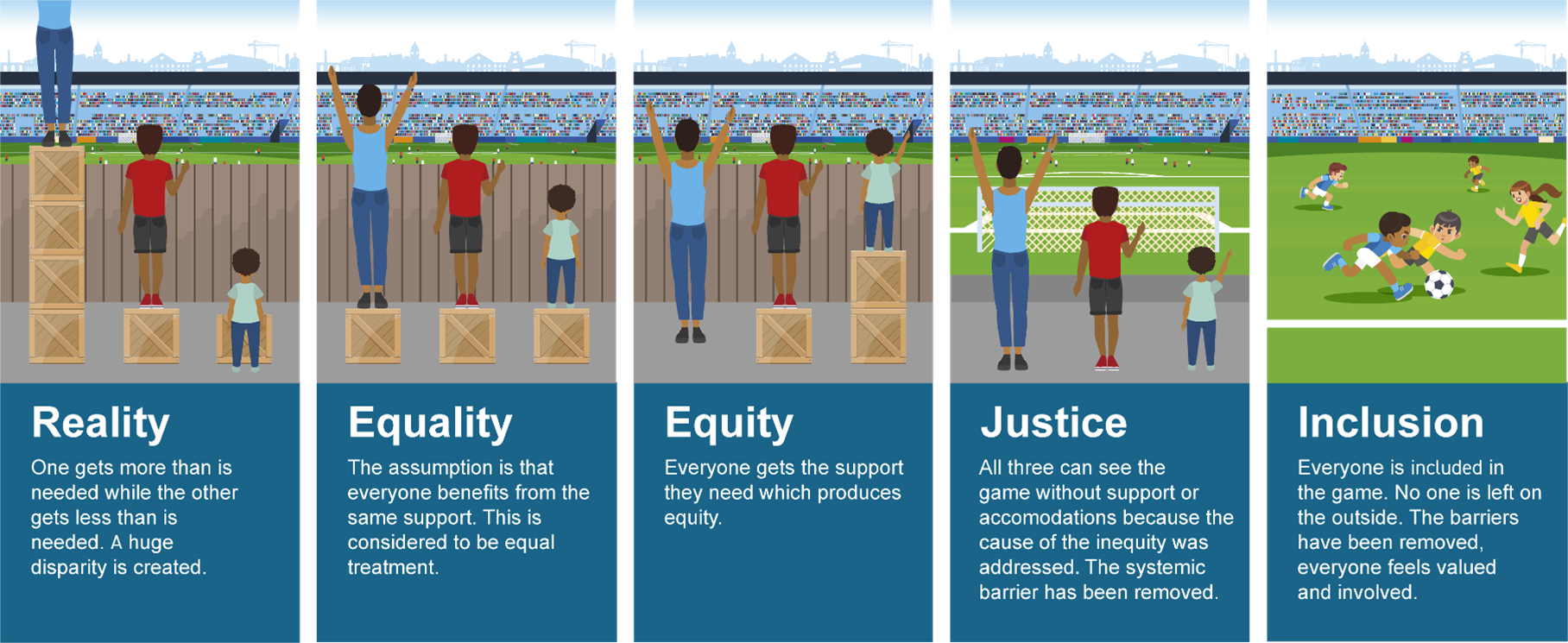The differences between equality, equity, justice and inclusion
The image below, courtesy of Kirklees Council, explains what reality, equality, equity, justice and inclusion are and how they look.
It is important to note that there will be other barriers people may experience, for example; visual impairments or health inequalities.

Reality
One gets more than is needed while the other gets less than is needed. A huge disparity is created.
In the first image, person 1 has been given four boxes to stand on. Person 1 was already really tall, and with the aid the the boxes has a great view of the game. Person 2 has been given one box to stand on and with the aid of this box is just tall enough to see the game over the fence. Person three also has one box but is unable to stand on it so cannot see the game at all. One gets more than is needed while the other gets less than is needed. A huge disparity is created.
Equality
The assumption is that everyone benefits from the same support. This is considered to be equal treatment.
In the second image, all three people have been given one box to stand on. Person 1 still has a good view of the game and the view is the same as before for person 2. Person 3 is now standing on the box but is much shorter than person 2 so cannot see the game at all. The assumption is that everyone benefits from the same support. This is considered to be equal treatment.
Equity
Everyone gets the support they need which produces equity.
In the third image, Person 1 has no boxes to stand on because they are tall enough to see the game just standing up. Person 2 still has one box and can see the game. Person 3 has two boxes to stand on and can now see the game. The boxes make all three people the same height. Everyone gets the support they need which produces equity.
Justice
All three can see the game without support or accommodations because the cause of the inequity was addressed. The systemic barrier has been removed.
In the fourth image, the fence has been removed so no-one needs a box to stand on. All three can see the game without support because the cause of the inequity was addressed. The systemic barrier has been removed.
Inclusion
Everyone is included in the game. No one is left on the outside. The barriers have been removed, everyone feels valued and involved.
In the final image, the spectators are now playing the game. Everyone is included in the game. No one is left on the outside. The barriers have been removed, everyone feels valued and involved.


